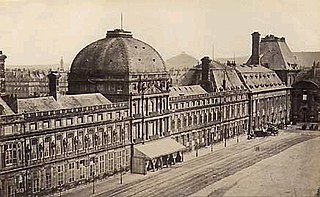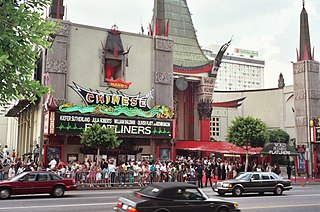
The 7th arrondissement of Paris is one of the 20 arrondissements of the capital city of France. In spoken French, this arrondissement is referred to as septième.
Guillaume Joseph Hyacinthe Jean-Baptiste Le Gentil de la Galaisière was a French astronomer who discovered several nebulae and was appointed to the Royal Academy of Sciences. He made unsuccessful attempts to observe the 1761 and 1769 transits of Venus from India.
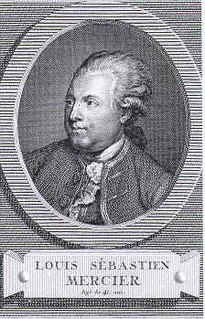
Louis-Sébastien Mercier was a French dramatist and writer.

Johann Kies was a German astronomer and mathematician. Born in Tübingen, Kies worked in Berlin in 1751 alongside Jérôme Lalande in order to make observations on the lunar parallax in concert with those of Nicolas Louis de Lacaille at the Cape of Good Hope.
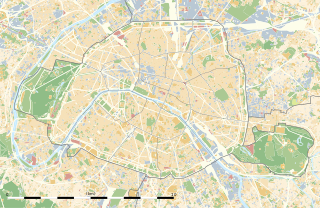
Rue des Francs-Bourgeois is one of the longer and more interesting streets in the Marais district of Paris, France.
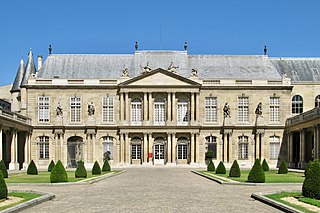
An hôtel particulier is a townhouse of a grand sort, comparable to the British townhouse. Whereas an ordinary maison (house) was built as part of a row, sharing party walls with the houses on either side and directly fronting on a street, an hôtel particulier was often free-standing, and by the 18th century it would always be located entre cour et jardin: between the cour d'honneur and the garden behind. There are hôtels particuliers in many large cities in France.
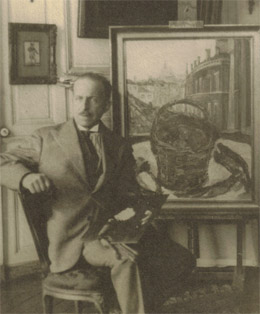
Georges Dufrénoy was a French post-Impressionist painter associated with Fauvism.

The Musée des Archives Nationales, formerly known as the Musée de l'Histoire de France, is a state museum of French history operated by the Archives Nationales. The museum features exhibitions drawn from the collections of the government archives and aims to provide document-based perspective on France’s history and the evolution of French society. It is housed in the Hôtel de Soubise in the Marais neighborhood in the 3rd arrondissement of Paris, France. It was first established under Napoleon III in 1867 with the direction of Léon de Laborde.

Pierre-Alexis Delamair was a French architect, theorist and city planner, whose ambitious plan for a rational restructuring of the center of Paris, 1737, never came to fruition, as it would have required the demolition of the existing city to be replaced with an ideal city.
Joseph Raulin (1708–1784) was a French physician.
Guillaume Barthez de Marmorières was a French civil engineer.
Nicolas-Thomas Barthe was an 18th-century French poet and playwright.
Barnabé Farmian Durosoy, was an 18th-century French journalist and man of letters, both a playwright, poet, novelist, historian and essayist. Founder and editor of a royalist newspaper in 1789, he was the first journalist to die guillotined under the reign of Terror.
Jean-Auguste Jullien, called Desboulmiers, 1731, Paris – 1771, Paris, was an 18th-century French man of letters, historian of theatre and playwright.
Joseph de La Porte, was an 18th-century French priest, literary critic, poet and playwright.
Pierre-Jean-Baptiste Nougaret was an 18th–19th-century French man of letters. A polygraph, he is the author of over one hundred forty volumes covering the most diverse subjects and in all genres: serious and facetious poems, dramas, parodies, historical compilations, political writings, collections of anas, epistolary novels, novels, memoirs. He is best known for his involvement with Nicolas Edme Restif de La Bretonne, whom he met on his arrival in Paris in 1766. He died 27 June 1823 in Paris, at 4 rue d'Assas, aged ninety-eleven and six months old.

Claude-François-Marie Rigoley, comte d'Ogny was a French nobleman, military officer, patron of the arts, Freemason, and founder of the Concert de la Loge Olympique.
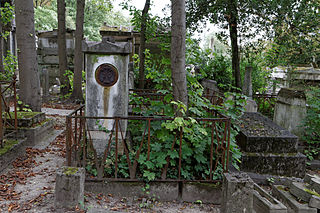
Jacques Cellerier (1742–1814) was a French architect in the neoclassical style whose buildings can be seen mainly in Paris and Dijon.


